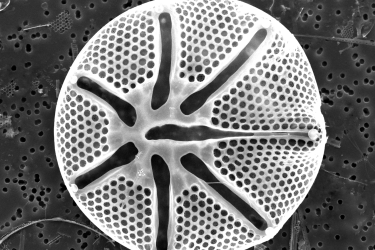Oceanographic fronts are a unique feature due to the fact that they provide a nutrient rich environment, like desert oases, that several organisms concentrate on for feeding, nursing, and breeding in an ocean that can be sparse in nutrients and resemble a desert.
To better understand this nutrient rich environment, instrumentation such as the PlanktonScope, allow researchers to study the spatial distribution and abundance of the zooplankton and small fishes that inhabit these oceanographic front environments.
Graduate students, such as Katie Lankowicz from the Center for Environmental Science at the University of Maryland, are using an in-situ high resolution towed underwater microscope camera, called the PlanktonScope, and deploying it off the NOAA Ship Bell M. Shimada to depths of 90-100 meters to record images of organisms at various depths.
The PlanktonScope is also simultaneously recording depth, water temperature, and salinity. Below are some photos of the types of organisms we see at the various depths recorded by the PlanktonScope.





